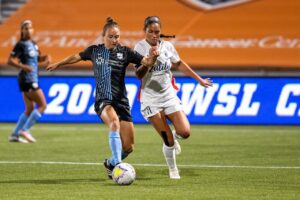
This year marks the first full year of the Women’s Super League (WSL), and we thought it would be an excellent time to look back at how the WSL has progressed. Throughout the summer, we’ll examine the WSL Club licenses, intermediaries, playing contracts, commercial rights exploitation, and other specific problems in the women’s game for football trials. This blog will focus on some of the significant peculiarities in competition regulations.
What is the Membership Requirement for the Women’s Super League?
One of the membership requirements for Tier 1 (WSL) women’s football club is that the club must field an academy team in the FA’s Academy Programme. With the emergence of a hitherto untapped talent pool in this country, we expect the number of contracts for female players under 18 to rise fast for better football trials.
Clubs and intermediaries (especially those new to the market) should be especially aware of this and take additional care from a compliance viewpoint because the FA is taking a zero-tolerance attitude to violations of legislation relating to minors.
What are the Salaries of Players in the Women’s Super League?
According to the Football Association, women who represent England on the international stage receive the same appearance bonus as men. As a response to a query about whether or not it will follow Brazil is paying male and female players equally for a senior international cap, the FA stated that parity on match fees and bonuses had been in effect since January. The Brazilian football organization has openly endorsed equal pay for women and men in sports and their football trials.
As far as match costs and match bonuses are concerned, the FA has stated that it treats its womens football wages the same way as its male counterparts. By January 2020, this parity would have been in effect. It is widely believed that England’s players earn a match fee of around £2,000, which is donated to charity by all the men and some women and some spent on football trials near me.
Despite the FA’s commitment to equal pay, England’s male and female players can earn vastly different sums from big tournaments due to the gender gap in prize money granted by FIFA and UEFA.
If England had won the Women’s World Cup last year, each player would have received a bonus of £50,000 from the FA. As a result, the guys would have received £217,000 each if they had triumphed in the World Cup in 2018. Later they conducted open football trials to strengthen their squad.
FIFA’s prize money is used to pay out the incentives. When France won the 2018 World Cup, the federation received $38 million in prize money, yet the USSF only received $4 million for winning the 2019 women’s competition. FIFA gave $30 million to the women’s teams and $400 million to the men’s teams in total. It is the first time that the FA has paid womens football pay to equal match and bonus pay for the first time and for football academy trials.
In addition to their club salary, they are also on central, FA-funded contracts. Approximately 30 players are covered, with the majority receiving a salary of about £30,000 under a tiered system that begins at £15,000 and considers factors such as experience and age as part of the calculation. The highest-paid players in England’s Women’s Super League make upwards of £200,000 a year, while earnings start at around £20,000 for all players.
What is the Limit of “Home Grown Players”?
For the Women’s Super League, the FA has taken a different approach to the “Home Grown Players” clause than it has for the Premier League. It has been established by the WSL that in a women’s football Uk squad of 23 players (the maximum number permitted), there must be at least 12 Home Grown Players. It is in stark contrast to the Premier League, allowing only 17 non-Home-Grown Players in a 25-man squad after conducting their football trials. Despite the tiny difference, clubs should keep this in mind.
Doubling of Investment in Women’s Football Across the FA Women’s Super League
As the 2022/23 season starts and continues through the 2024/25 season, Barclays, The Football Association (The FA), and the Premier League have signed new three-year sponsorship partnerships. Barclays and the Premier League celebrated their 20th anniversary with the bank’s Barclaycard brand, which initially collaborated with the League in 2001.
In the UK, women’s and girls’ football will receive more than £30 million from Barclays over the next five years, a new record for investment in the sport. Bank of America has announced that it will be the headline sponsor of the FA Women’s Super League for the first time in 2019.
In addition, the bank will be the first sponsor of the FA Women’s Championship, which it will hold in the fall of 2019. This season’s Barclays FA Women’s Championship will be renamed the Barclays FA Women’s Championship from 2022-23 to support and encourage increased investment in women’s football and their better football trials.
By increasing its support of The FA Girls’ Football School Partnerships (FAGFSP), Barclays hopes to ensure that all girls have equitable access to football in their educational institutions. As of 2019, over 9,700 other schools have joined the FAGFSP with Barclays’ sponsorship, bringing the total to over 12,000**. The additional financing will allow the FA to hire more staff to support the initiative and reach its 2024 goal of 20,000 schools offering girls’ soccer programs.
The Competitive Rules of Women’s Super League
Finally, we’ll discuss the WSL and Women’s Championship Rules regarding tickets. For starters, the cost of entry for both home and away fans must be the same. Free entrance to all WSL games (Should large football players clubs open their stadiums for women’s teams?) has been debated, at least initially, to increase attendance.
Although the competition regulations state that “Clubs may have a maximum of three Competition Match days each Playing Season in which they can adjust admission rates for adults including offering free admittance,” this is not always the case. As a result, tickets to the games will not be free, at least not right away. The FA is making another effort to safeguard the WSL clubs’ financial stability and self-sufficiency for football trials London.
The FA Regulations on Working with Intermediaries provide that an Intermediary in the women’s game must be registered and follow the same regulations as those in the men’s game. If you are an Intermediary attempting to contract players under the age of 18, we have already warned you of the hazards of falling foul of these restrictions, mainly if you are an agent.
